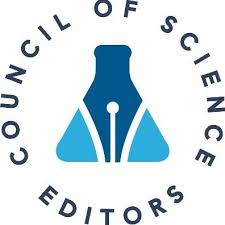Alopecia areata (AA) is a form of non-scarring hair loss with immune background. In parallel with the major disorders that constitute the criteria for diagnosis of AA, there are usually many other abnormalities, including oxidative-antioxidative balance disorders, which are of pathophysiological and clinical importance and provide the basis for making both preventive and therapeutic decisions [1, 2].
Reactive oxygen species (ROS) are molecules functioning as secondary cellular transmitters which are formed during the physiological processes of cellular metabolism. Released in small amounts, they act as mediators and regulators of metabolism. Many factors affecting the cell contribute to an increased generation of ROS, and changes in their concentration inside the cell, affect the expression of antioxidant enzyme genes, acute-phase proteins, cytokines and their receptors, growth factors and genes of cell adhesion proteins [3].
Insufficiency of defense systems and an increase in free radical levels leads to prooxidant-antioxidant imbalances and, consequently, to inducing oxidative stress [4]. Polyunsaturated fatty acids that are part of phospholipids are particularly susceptible to oxidation. It is a chain process where the key product is malondialdehyde (MDA), commonly used as an indicator of oxidative lipid damage. Oxidation products of the lipid component of cell membranes lead to lower hydrophobicity of lipid cell interior, changes in membrane receptor function and double lipid layer organization, and in consequence, to disorders of their lipid asymmetry and loss of integrity of cell membranes [3, 5].
Reactive forms of oxygen are also responsible for the oxidative modifications of proteins (AOPPs). Dityrosine, carbonyl groups and cross bonds are most abundant in the structure of AOPPs. Physiologically AOPPs are formed throughout life, with a slightly increasing intensity with age. An increase in their concentration has been observed in some pathological conditions accompanied by inflammation [6].
The objective of this study was to evaluate the oxidant-antioxidant balance in patients with AA by assessment of the activity of paraoxonase 1 (PON1), the level of malondialdehyde (MDA) and advanced oxidation protein products (AOPPs) in patients with AA. The study included 30 AA patients (23 females/8 males, mean age: 34.4 ±10.9) and the control group consisting of 30 age- and sex-matched healthy volunteers (17 females/13 males, mean age: 37.3 ±17.4). There were no significant age or body mass index (BMI) differences between groups.
A disturbance in the oxidative-antioxidant balance was demonstrated by a statistically significant decrease in the PON1 activity level in blood serum samples of the patients with AA in relation to the control group (p = 0.001). Plasma MDA concentration in the tested group was higher as compared with the control group, and the difference was statistically significant (p = 0.002). Higher mean values of plasma AOPPs were recorded in the tested group as compared with the controls, the difference however was not statistically significant (Table 1).
Table 1
The values of MDA, AOPPs and PON1 in peripheral blood of alopecia areata patients and healthy subjects
| Parameter | AA patients (n = 30) | Healthy subjects (n = 30) | P-value |
|---|---|---|---|
| MDA [nmol/ml plasma] | 0.487 ±0.086 | 0.419 ±0.073 | 0.002 |
| AOPPs [mol/l] | 37.248 ±8.998 | 32.645 ±13.182 | 0.120 |
| PON1 [U/l] | 38.192 ±20.402 | 59.465 ±27.661 | 0.001 |
Many studies have reported the involvement of oxidative stress in AA [7, 8]. For this reason, the levels of MDA and AOPPs were investigated in alopecia patients for the evaluation of oxidative stress and so were levels of PON1 for the evaluation of antioxidant defense system efficiency.
Paraoxonase PON1 is involved in the metabolism of xenobiotic substances by the hydrolysis of ester linkages, thus plays an important role in the body detoxification process. It seems that this enzyme plays a crucial role in protection of the organism from oxidative stress and related complications, however, all its properties are not fully understood [9]. Decreased paraoxonase 1 activity in patients with AA may be due to increased concentration levels of free radicals oxidizing PON1. It would be interesting to deepen research into PON1 in this regard.
Nevertheless, an increase in the level of plasma MDA in this group of patients may indicate an intensification of lipid peroxidation, which suggests overproduction of free oxygen radicals in the course of AA. Then the confirmation of participation of advanced oxidation protein products (AOPPs) in the AA pathomechanism creates a new area of research related to the role of free radicals in physiology and pathophysiology. The AOPPs may be regarded as helpful indicators of oxidative stress intensity and a degree of oxidative damage to proteins.
Alopecia areata constitutes a crucial problem, not only from the aesthetic but also psychological point of view. Although the hair growth phase cycle and factors affecting its inhibition are already well known, AA still causes great diagnostic difficulties in dermatological practice. Despite intensive research work, there is still no medicine for this disease which would produce a lasting and satisfactory therapeutic effect. Oxidative balance disorders associated with this disease may therefore be potential targets for new therapies.








